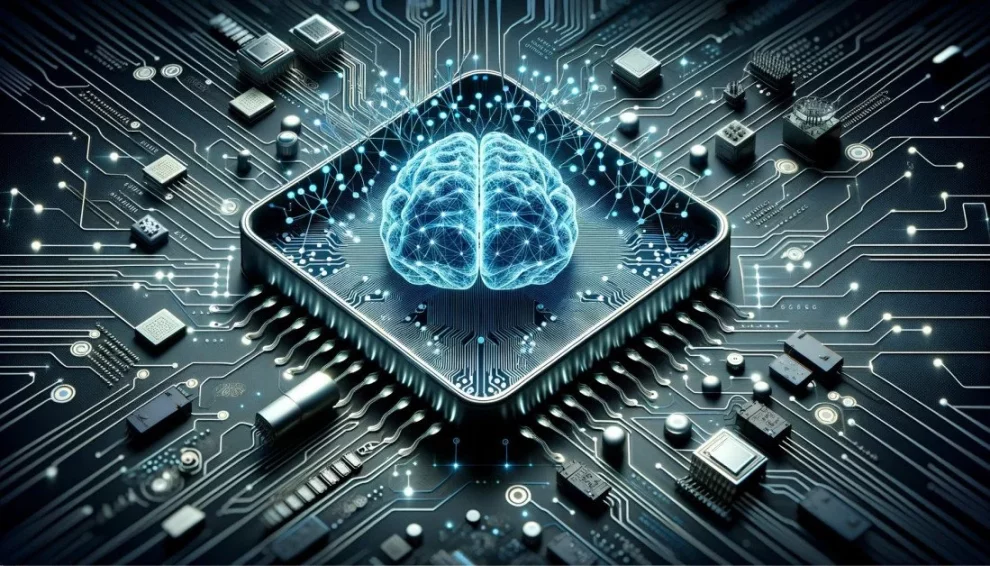In the age of information, artificial intelligence (AI) has become the driving force behind technological advancements. However, the ever-increasing power demands of traditional AI models pose a significant challenge – environmental impact. This is where bio-inspired AI steps in, offering a revolutionary approach to energy-efficient neuromorphic computing.
The Rise of the Energy Guzzlers
Traditional AI, powered by the von Neumann architecture, relies on separate processing units and memory locations. This constant data movement between units consumes significant energy, raising concerns about sustainability. As AI applications become more complex and demanding, the energy footprint is projected to skyrocket, making current models unsustainable in the long run.
Enter the Brain-Inspired Revolution
Inspired by the remarkable efficiency of the human brain, bio-inspired AI aims to bridge the gap between traditional computing and natural intelligence. This approach focuses on neuromorphic computing, which utilizes specialized hardware platforms designed to mimic the structure and function of the brain. These platforms consist of artificial neurons and synapses, the fundamental building blocks of the brain, responsible for processing and transmitting information.

Key Advances in Bio-inspired AI
1. Neuromorphic Devices
Researchers are developing novel materials and devices specifically tailored for neuromorphic computing. These devices, such as memristors, can mimic the behavior of biological synapses, offering advantages such as:
- Lower power consumption: Memristors require significantly less power to change their resistance state compared to transistors in traditional computers.
- Parallel processing: Neuromorphic devices can process information simultaneously, mimicking the brain’s parallel processing capabilities, leading to increased efficiency.
- In-memory computing: By integrating processing capabilities within memory devices, data movement is minimized, further reducing energy consumption.
2. Spiking Neural Networks (SNNs)
Unlike traditional artificial neural networks (ANNs) that rely on continuous data flow, SNNs operate using discrete “spikes” of activity. This approach is more akin to the spiking behavior of biological neurons and offers several benefits:
- Reduced energy consumption: SNNs only process information when there is a “spike,” significantly reducing the need for continuous data processing compared to ANNs.
- Increased efficiency: SNNs can handle data more efficiently, especially for specific tasks like pattern recognition and real-time applications.
3. Brain-inspired Learning Algorithms
Beyond hardware advancements, researchers are developing novel learning algorithms inspired by the learning mechanisms of the human brain. These algorithms can:
- Adapt more efficiently: Bio-inspired algorithms can learn and adapt to changing environments with less data, reducing computational costs and energy consumption.
- Perform online learning: These algorithms can learn continuously and incrementally, eliminating the need for large training datasets, further enhancing efficiency.
The Road Ahead: Challenges and Opportunities
While bio-inspired AI shows immense promise, significant challenges remain:
- Scalability: Scaling up neuromorphic hardware to handle large-scale datasets and complex tasks is still a challenge.
- Software Development: Developing efficient software tools and frameworks tailored for bio-inspired hardware is crucial for its widespread adoption.
- Neuroscience Knowledge Integration: A deeper understanding of the brain and its learning mechanisms is essential to further refine bio-inspired models.
Despite these challenges, the potential benefits of bio-inspired AI are undeniable. It offers a sustainable and efficient path for the future of AI, paving the way for advancements in:
- Edge computing: Low-power neuromorphic devices offer ideal solutions for processing data at the edge, enabling applications in the Internet of Things (IoT) and smart devices.
- Real-time applications: The efficient processing capabilities of SNNs make them suitable for real-time tasks like robotics control and intelligent sensors.
- Brain-computer interfaces (BCIs): Bio-inspired AI can help bridge the gap between brain and computer, leading to advancements in BCIs for medical applications and assistive technologies.
Conclusion
Bio-inspired AI, with its focus on energy-efficient neuromorphic computing, presents a transformative paradigm shift in the world of AI. By tapping into the brain’s remarkable efficiency as inspiration, researchers are paving the way for a more sustainable and powerful future of intelligent machines.
As ongoing research addresses the remaining challenges, we can expect bio-inspired AI to revolutionize various fields, empowering new applications and shaping the future of technology in a responsible and environmentally conscious manner.
















Add Comment